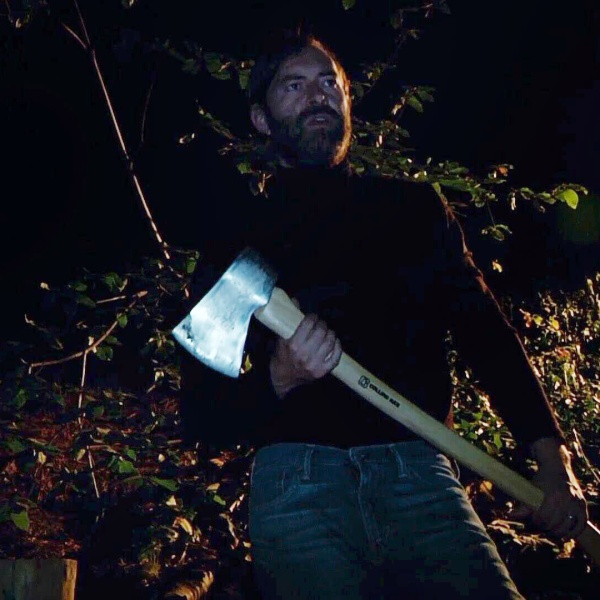Plus Watch The Film In Real Time, And Nolan’s Structure Drawing

When you think about it, there’s really no way that “Inception” should have worked. A film of ludicrous ambition, a $200 million dollar passion project, attempting to combine the arthouse and the blockbuster at one fell swoop, and, unlike virtually every other tentpole, not based on a comic book, video game or airport novel. Not to mention that the history of directors being given carte blanche following a megahit doesn’t always work out for the best — right up until the film started screening, we were still concerned that it could turn out to be Nolan’s “Heaven’s Gate.”
In fact, it turned out to be perhaps the best film from a director who’s yet to make a bad one, both a tremendous filmmaking achievement, and a thrilling piece of popular entertainment that simultaneously managed to be intellectually provocative — close to six months from release, the debates are still raging, and, with the film hitting DVD and Blu-Ray yesterday, they’re unlikely to die down any time soon.
Tying in with the home entertainment release, and the film’s awards push, various tidbits have surfaced in the last couple of days which have added to the intrigue. Firstly, In Contention have found an interview, which comes packaged with the shooting script of the film, between Christopher Nolan and his brother, and “The Dark Knight” co-writer Jonathan. It’s a lengthy and in-depth discussion, mostly focused around the writing of the film, and well worth a read. We’ve gathered the ten most interesting quotes together below, and you can head over to In Contention to download a .pdf of the whole thing, as well as a graph, hand-drawn by Nolan, of the film’s structure — another fascinating look at the director’s process. Underneath, there’s also a video that’s gone viral in the last few days (via EW) — a split-screen edit of the film’s third act, attempting to show the multiple levels of the dream world operating as they would in real time. It’s an impressive clip, and again shows the enormous thought that went into the finished product. It shouldn’t really need to be said, but spoilers are below, for the few who haven’t yet seen the film.

On the need for rules:
“I was definitely looking for a reason to impose rules in the story during the writing process. When I saw the first Matrix film, I thought it was really terrific, but I wasn’t sure I quite understood the limits on the powers of the characters who had become self-aware… [Inception needed] a set of reasons that you could graph for why it’s not chaos and anarchy — for why it has to be order, and why you need architects and an architectural brain to create the world of the dream for the subject to enter”
On the emotional resonance of the film:
“The problem I had was finishing it, because the heist movie as a genre tends to be deliberately superficial. It tends to be glamorous. It tends to be light entertainment. And I realized that when you’re talking about dreaming, when you are talking about this universal human experience, you need the stakes of the story to have a much more emotional resonance”
On the psychological revelation of the main character:
“Think of Cobb, with his issues, as the onion of his characters peels away during the film. And Ariadne, who is very much the person who pokes at that”
On the film’s original villain:
Chris: “I never quite knew how to finish it until I realized that the antagonist of the film should be the guy’s wife”
Jonathan: “The antagonist had originally been his partner”
Chris: “”Yes… His partner in crime, who had betrayed him and so forth. But that didn’t lead anywhere emotionally. It didn’t have any resonance”
On his doubts over “The Dark Knight”:
“But with The Dark Knight, you see, I was able to look at the ferry scene at the end while mixing it, for example, and I’d say, “Wow, this is a really unusual way to end a big action movie.” But I already knew that because it was something you put in your draft, which made me immediately think “I don’t know about that”
On giving the audience the benefit of the doubt:
“There are points where you worry that you might be putting too much in and alienating the audience. But, funnily enough, some of those fears aren’t correct. Sometime, when you start thinking too much what an audience is going to think, when you’re too self-conscious about it, you make mistakes. Somewhere in the back of my mind, for example, I had assumed the business with the spinning top in the safe would wind up being cut out of the film. But when we started showing the film to people, that scene… I thought we’d have to lose it because it was a symbol too far. Or an image too far. But what we realized in showing it to people is that they actually grasped the imagery as something to hold on to, as an illustration of things that had happened off camera.”
On ideas and the mainstream, and his aborted Howard Hughes project with Jim Carrey:
“The underlying philosophy for me, in terms of the complexity of the film, had always been that those things that had allowed “Memento” to succeed with audiences in a very mainstream fashion could be tapped to make a huge-scale movie. And that’s the premise on which “Inception”‘s been built. I tried to do it with my Howard Hughes project first. And when that wasn’t going to fly, I put a lot of that thinking into this; into fusing the scale and entertainment value of a large film with something more – and I really don’t want to say “challenging for an audience” because I don’t think it is — that’s just a little different and a little bit of a shift.”
On wanting to be surprised:
“Well, I’ve done really well so far in my career by trusting the audience to be a s dissatisfied with convention as I am, as a filmgoer. You want to go see a film that surprises you in some way. Not for the sake of it, but because the people making the film are really trying to do something that they haven’t seen a thousand times before themselves. I give a film a lot of credit for trying to do something fresh — even if it doesn’t work.”
On being able to come to his own films fresh:
“Because with every film, there’ll be one screening where, for whatever reason – because of who the audience is, or because of where I am technically in the process, or because of what elements I’m watching – I am actually able to watch the thing in a completely fresh way, like it isn’t mine… And I think one of the reasons I still really love to screen the work print, cut it and tape it together, is that it’s an incredibly stressful way of watching a film. Because the image is raw — it’s not dressed up at all. It’s an incredibly high-resolution image. But every splice can break, and the projector can bounce too much; you’re terrified of the technical aspects for the audience. And that, in itself, makes you watch it in an incredibly attentive manner.”
On the ‘filmmaking’ analogy within the film:
“The heist movie aspects, too, closely parallel the process of making a film. You have a team of people working together. You’ve got a writer, you’ve got an actor, a production designer, a DP. But it had never occured to me that everything I’m saying about creating a thing and trying to perceive it at the same time, which is what you’re doing as you edit the film, relates absolutely to the filmmaking process. That’s the whole thing you’re trying to do: You’re literally presenting this thing in which you’ve put words into people’s mouths, and you’re trying to watch it as if you’re fresh to it… But I would never want to make a film literally about filmmaking. But making something that you really relate to because of the work you do and the process you’re engaged in, that’s actually a lot of fun.”





